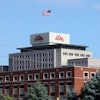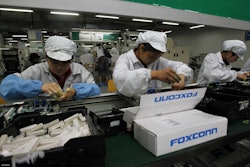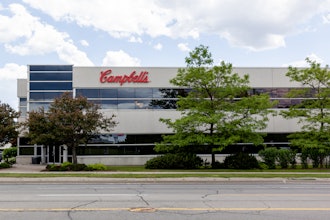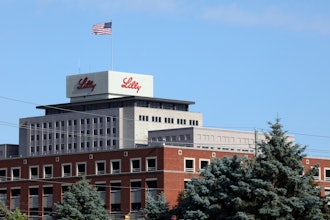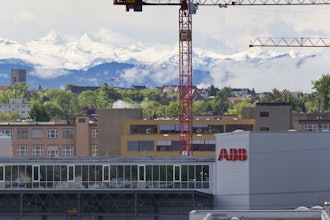MOYOCK, N.C. (AP) — Marlin Stoltz put on a hard hat and bright yellow vest before walking out into the 4-acre work area of the Moyock Casting Facility, a new operation in the business of spent nuclear fuel storage.
A line of concrete cases, each 21 feet long and weighing 100 tons, rested along a rail spur, ready for shipment. Several men stood atop a steel form where hydraulic power vibrated and settled four truckloads of concrete for the next case.
A concrete plant operated less than 100 yards away.
The property, along N.C. 168 near the Chesapeake border, is a short trip by rail or truck from Norfolk's port terminals, where barges haul in cement and rock. A rail line, a concrete plant, a good highway, proximity to the port and isolation from residential development all make the site nearly perfect for its purposes, Stoltz said.
"This allows us to work very efficiently," said Stoltz, supervisor of the Moyock Casting Facility and a deputy of the services business line for parent company Areva TN, a division of Areva Inc., based in Charlotte.
Areva Inc. has operations within the entire nuclear cycle, including uranium mining.
The Moyock facility opened in January and has 25 employees. It makes concrete modules that encase steel canisters that are used to store spent nuclear fuel. From here, the modules head to nuclear plants elsewhere.
"We have no nuclear material here," Stoltz said.
When fixed with concrete caps, the structures serve as shields from radiation, enable heat removal and provide structural stability for the canister of spent fuel placed inside. Vents in the walls allow air to travel around the case, helping to cool its contents.
When the plant began operating in January, it took three weeks to make one module. Now it takes four days, Stoltz said.
Storing spent nuclear fuel remains a vexing problem, even though nuclear energy has been used to generate electricity for more than 50 years.
Nuclear power provides 20 percent of the nation's electricity from 99 reactors in 30 states, including four in Virginia and five in North Carolina, according to the Nuclear Energy Institute. The U.S. produces more nuclear power than any other nation, but China is surging in an effort to produce efficient clean energy, Stoltz said.
Nuclear plants generate about 2,000 metric tons of spent fuel each year. The amount of spent nuclear fuel in the United States now totals 74,000 metric tons, enough to cover a football field eight yards deep.
Most of it is stored at nuclear power plants, first in cooling pools for 15 to 20 years. Later, the fuel rods are removed for dry storage.
Since the first dry-storage casks were implemented in 1986, no radiation has been released that contaminated the environment, according to the U.S. Nuclear Regulatory Commission. There have been no known or suspected attempts to sabotage cask-storage facilities.
Still, storing the spent fuel poses a consistent problem. A Blue Ribbon Commission recommended establishing interim sites away from nuclear plants and eventually developing a permanent disposal site deep in a mountain. The catch is finding places with local support.
The federal government was supposed to establish a permanent storage site deep underground by 1998 at Yucca Mountain in Nevada, but public resistance stopped construction. The nuclear industry still supports that depository plan, according to the Nuclear Energy Institute.
Despite a lull after an accident at the Fukushima Daiichi plant in Japan five years ago, during an earthquake and tsunami, the nuclear industry is expected to grow as the demand for electricity increases by 22 percent by 2040, according to the U.S. Energy Information Administration. Five new nuclear reactors are under construction and several other applications are under review.
Meanwhile, demand for spent fuel storage remains strong, Stoltz said. The Moyock plant means to deliver.
"The back end of the business is growing," he said.
___
Information from: The Virginian-Pilot, http://pilotonline.com

